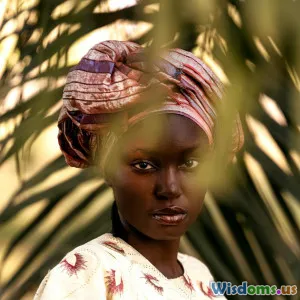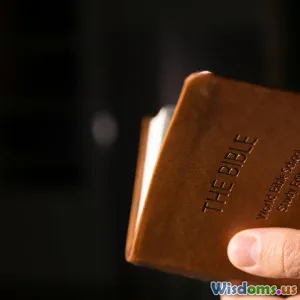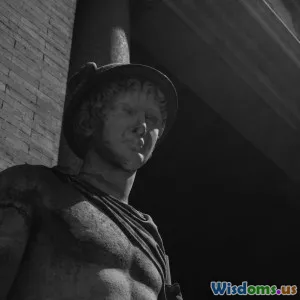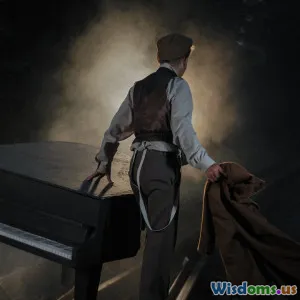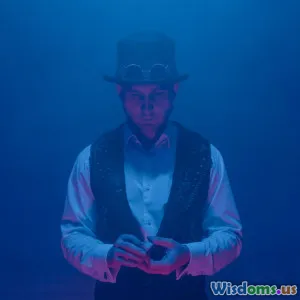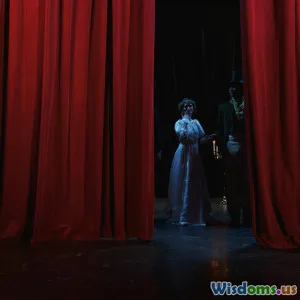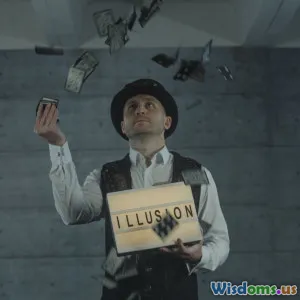
Magic and Mystery: Theatrical Innovations Through Time
9 min read Explore the captivating journey of magic and mystery in theatrical innovations, from ancient tricks to modern illusions. (0 Reviews)
Magic and Mystery: Theatrical Innovations Through Time
Magic has enthralled humans since ancient times, evoking wonder and delight. The interplay of illusion and revelation has led to captivating theatrical innovations that have transformed performances over the years. This article explores the fascinating journey of theatrical magic, examining technological advancements, famed practitioners, and the cultural impacts that have shaped our understanding of the mysterious and the magical.
The Ancient Origins of Magic and Performance
Long before modern stage craft, magic found a home in ancient cultures. In ancient Egypt and Greece, magicians known as hieroglyphs and magoi performed wonders that blurred the line between wonder and worship. The Greek philosopher Plato referred to magic as a serious endeavor, implying that magic was not merely entertainment but a craft worthy of respect.
One of the earliest documented performances was recorded by the ancient Egyptian magician Dedi around 2,700 BC, who purportedly performed gross bodily vivisection! His acts captivated audiences and laid the groundwork for magical entertainment. As magic became an integral part of various cultures, its theatrical display evolved, paving the way for a formal acknowledgment of illusionists as entertainers.
The Renaissance: A Pivotal Era for Stage Magic
The Renaissance period (14th to 17th centuries) marked a significant turning point for theatrical innovations in magic. The era witnessed a surge in artistic exploration and the rise of influential figures who elevated stage performances. An iconic example is Juan Tamariz, who hit the scene much later but shows how deeply rooted European stage magic culture is.
During the Renaissance, devices such as pulley systems and trap doors became crucial in theatrical performances, enhancing the illusion of vanishing and transportation. The Magician’s Secrets, published by the Magician's Guilds, documented tricks and performances, reflecting the evolving landscape of magic and its acceptance within society.
The Age of Enlightenment: Advancements in Technique
Transitioning to the 18th century, the Age of Enlightenment sparked a wave of scientific inquiry that influenced entertainment techniques. The advent of the scientific method and mechanical innovations introduced precision in optical illusions that astonished spectators.
One of the leading figures of this period was Jean Eugène Robert-Houdin, often called the father of modern magic. Robert-Houdin's emphasis on the artistry and presentation of magic, rather than mere trickery, profoundly influenced the perception of magic as sophisticated entertainment. He incorporated electrics into his performances, such as using an electrical apparatus to create extraordinary visual phenomena. This shift illustrated how invocations of science could enrich and deepen theatrical presentations.
The Golden Age of Magic: Vadgerys and Variety Shows
The late 19th century to the early 20th century witnessed the Golden Age of Magic, characterized by the emergence of stage giants such as Harry Houdini, whose name itself has become synonymous with escape artistry. Houdini’s dramatic escapes captivated large audiences, combining elements of suspense, theatrical storytelling, and exhilarating spectacle.
During this time, variety shows became a popular form of entertainment, with magic acts filling the stages alongside musicians, dancers, and comedians. The famous keep 'em guessing title perfectly defines the collective desire of audiences to remain spellbound, dynamically changing the theatrical culture in favor of spectacle.
Technological Innovations in 20th Century Magic
The evolution of magic continued unabated in the 20th century as new technologies emerged, reshaping the craft into a high art form. The invention of cinema introduced unique ways to manipulate images and sound and expanded the boundaries of what could be achieved on stage and screen. Movies like The Prestige would go on to inspire an entire generation about the allure and questions surrounding magic and reality.
Illusionists such as David Copperfield leveraged technology by incorporating large-scale illusions and high-profile misdirections, drawing worldwide attention. His performances like The Death Saw and The Vanishing Statue of Liberty blended storytelling and high stakes with technological innovation, captivating millions.
Enter the world of television—a medium both challenging and advantageous for magicians. While it presented difficulties in translating the live experience, many street magicians thrived, showcasing sleight-of-hand trickery and urban performances that shifted the paradigm towards accessibility. Criss Angel became an unparalleled sensation with his ability to replicate lavish stage style while delivering ambient desert illusions to mass audiences.
The Role of Culture in Theatrical Innovations
Cultural shifts often provoke changes in the practice of magical arts. Post-World War II, in many Western societies, magic began to intertwine with popular culture more closely. The 1970s saw a rise in postmodern approaches, with a movement toward self-aware and deconstructionist performances led by figures like Penn & Teller. These magicians cleverly used themes of skepticism against the historically accepted norms of magic as simply a performance.
The current resurgence of magic relates heavily to diverse cultural influences. The Magic of Hollywood combined storytelling, illusion, and technology, reflecting evolving American culture. Community magic shows inspired by performers from around the globe have revitalized grassroots interest, turning traditional performance into immersive experiences.
The Future of Magic and Theatrical Innovations
As we venture into the digital age, magic continues to adapt. The advent of Augmented Reality (AR) and Virtual Reality (VR) will undoubtedly change how magic is presented and how audiences experience it. Performers could entice viewers through immersive environments that rapidly recontextualize the stages of old into fantastical worlds where the rules of physics bend and twist at will.
Online platforms like YouTube and TikTok have democratized magic, allowing budding illusionists to reach global audiences without the constraints of traditional performance venues. The modern magician's craft combines traditional mastery with an impressive understanding of digital media, expanding the definition of magical innovation.
Conclusion: The Ever-Evolving Mystery of Magic
The history of magic in theatrical performances reveals a tapestry woven with culture, science, technology, and artistry. From the rituals of ancient civilizations to the impressive illusions of contemporary entertainers, magic reflects persistent human curiosity and creativity. As our world continues to change at a dizzying pace, so too will theatrical magic—an art requiring in-depth interaction with audiences while constantly exploring the edges of what is real.
Through the ages, one constant remains—the thirst for moments of awe and the ability to suspend disbelief. Magic is a testament to our imagination and the endless possibilities that arise at the intersection of illusion and reality.
Rate the Post
User Reviews
Popular Posts












